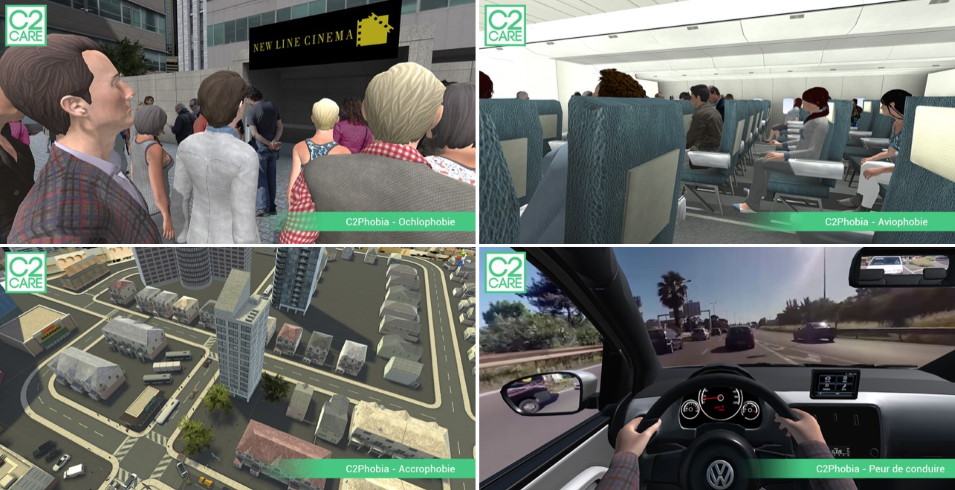 Virtual reality therapy
Virtual reality therapy

Virtual reality is a set of images and sounds produced by a computer, which create a place or a situation that a person can take part in. The equipment consists of a computer, a headset and joysticks.
The virtual reality therapy is based on a graded exposure to virtual objects or virtual situations of which a person has irrational fear.
In other words: imagine you are scared of spiders: you will start the therapy with being exposed to a virtual spider far away from you, then gradually over the therapy sessions the spider will come closer; if you are scared of heights, you will start with being exposed to the height equal to the 1st floor of a virtual building, then gradually you will be exposed to heights equal to the 2nd floor, 5th floor, etc.
Origins of the irrational fear:
- It can be a problem by itself : a phobia.
- A part of a disease : the post-traumatic stress disorder (PTSD).
- Some forms of the obsessive compulsive disorder (OCD): for example fear of contamination and germs.
The advantages of the virtual reality therapy over the therapy in real life situations:
- Security: graded exposure and the possibility to modify the virtual environment allows us to minimize the risk of an anxiety attack. Whereas a therapist has absolutely no control over a real life situation and a panic attack in the real life situation can worsen your problem;
- Medical secret preserved: we often find ourselves surrounded by other people in public places, whereas virtual reality is done with a therapist in an office;
- Reducing cost and saving time: virtual reality allows you to get exposed to planes, metro, cars, elevators and many more in a therapist's office. We no longer need to go look for it outside;
- Ethical reasons: long ago therapists used to catch spiders in their homes and bring them to offices to expose their patients. With virtual reality we no longer need to eradicate animals from their natural habitats.
Virtual environments for phobias, obsessive compulsive disorder (OCD) and post-traumatic stress disorder (PTSD):
- Acrophobia (fear of heights)
- Agoraphobia (fear of open and/or public spaces)
- Claustrophobia (fear of small spaces or fear of being locked in)
- Glossophobia (fear of speaking in public)
- Aquaphobia (fear of water)
- Ochlophobia (fear of crowds)
- Aviophobia (fear of flying)
- Mysophobia (fear of contamination and germs)
- Belenophobia (fear of needles)
- Amaxophobia (fear of being in or riding in a vehicle)
- Emetophobia (fear of vomiting)
- Zoophobia (fear of animals): cats, dogs, rats, wasps, spiders, pigeons
- Hospital phobia : dentist, doctor, MRI machine
If your fear is not listed, please do not hesitate to contact us to talk about it : the application we use allows us to integrate 360° videos that can be found on the internet.
And don't worry if you have never tried the virtual reality before: the therapist is there to explain you everything and to guide you during the whole process.
Practical information:
- Weekly individual sessions of 40 minutes
- The first 4 to 5 sessions are for understanding your problem, explaining anxiety mechanisms and teaching you relaxation and other methods that will help you to manage your anxiety during the exposure therapy;
- Session language: French or English;
Contact :
To take an appointment or if you have any other question, contact the consultation of Psychiatry.



